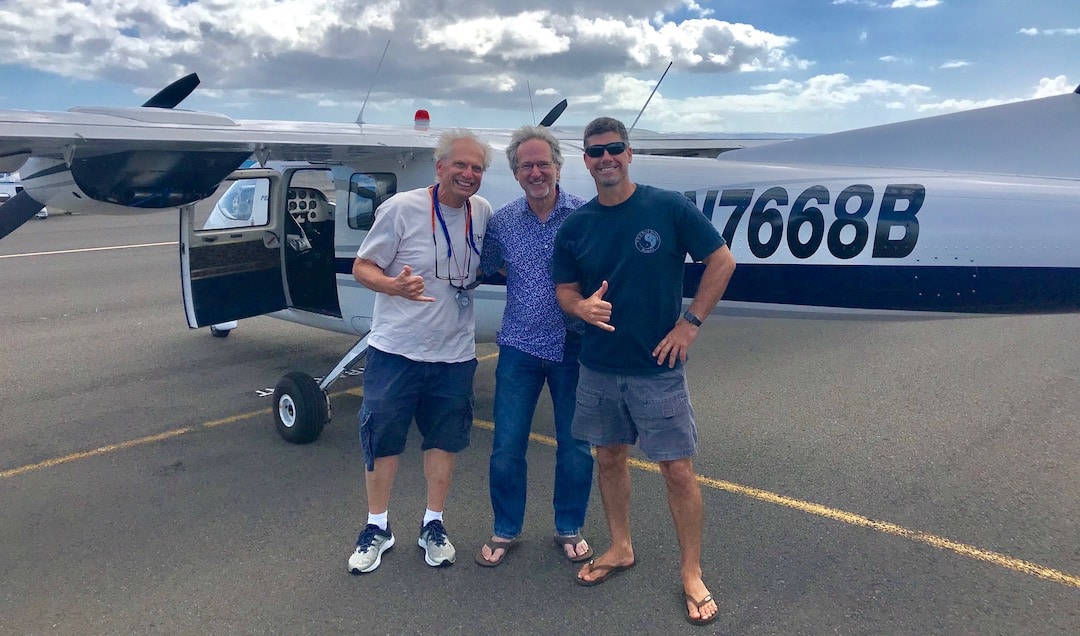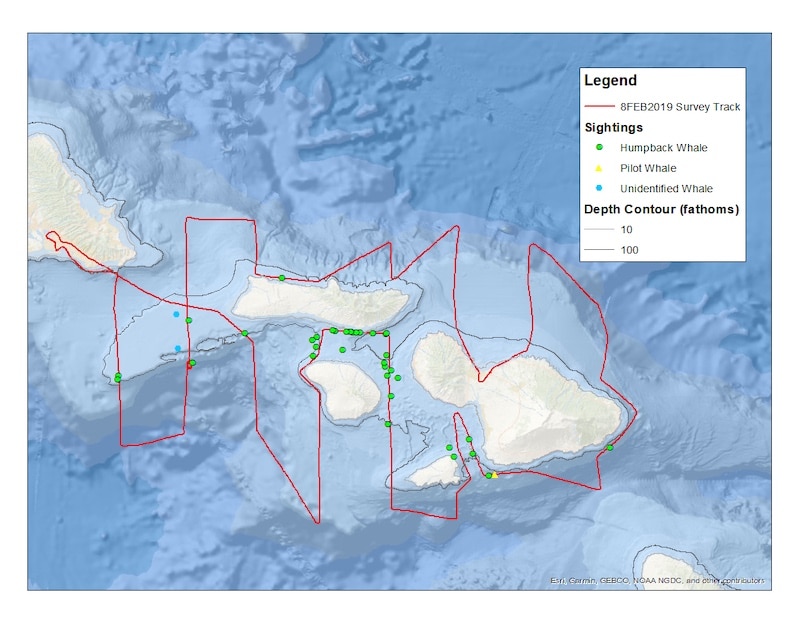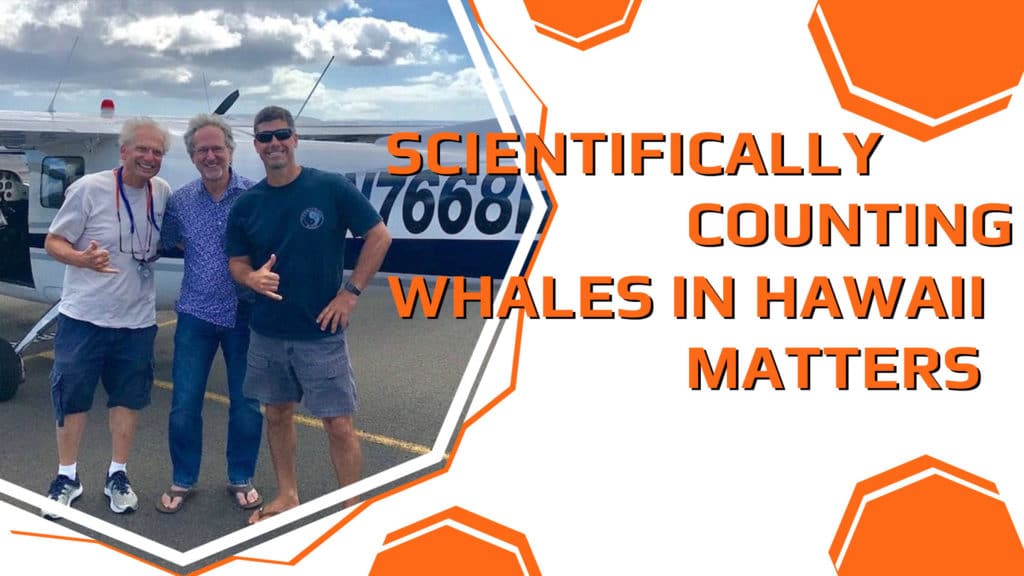10 Facts About Spinner Dolphins
Seeing whales on a whale watch tour is awesome. No doubt about that. But do you know what else is awesome? Seeing dolphins! But is it legal to swim wi...

Keeping tabs on Hawaii's humpback whale population is important, particularly so in light of recent reports that they may be on the decline. One group of local researchers responded to this concern by performing aerial surveys of Maui Nui (greater Maui region) based on the same methods used earlier (1993-2003). Drs Joe Mobley, Mark Deakos and Adam Pack flew over the same course used in that previous series on February 8, 2019 and spotted 33 pods of humpbacks around the Maui area. Two more surveys are scheduled for later this season.
The 33 whale pods seen on their first survey was actually quite a bit fewer than this time of year in previous surveys. In 2003 he and his team spotted 46 pods. A pod, for research purposes, can consist of one whale swimming alone to numerous whales, with an average of two whales per pod.
Here is the path the researchers took and also where the whales were spotted:

We asked Dr. Mobley why counting whales is important: "Every bit of protective legislation begins with a count, or 'abundance estimate.' Based on abundance estimates, we can place species on the Endangered Species Act (ESA) list, or interpret existing legislation (e.g, Marine Mammal Protection Act) to produce guidelines like the 100 yd minimum approach limit in Hawaii all designed to protect the whales. Once we have a solid count, we can pass this on to NOAA for action." In other words, the future of humpback whales rests in scientific counts like the one Dr. Mobley is undertaking.
On the other hand, the whale counts that seem to drum up the most press coverage, like the upcoming Great Whale Count, are not scientific. The folks that count the whales are volunteers (we truly appreciate their efforts) that stand on shore and literally count the number of whales they spot. Though "citizen science" can give a big picture overview of the number of whales here in Hawaii, it isn't the most accurate way to count whales.

According to Dr. Mobley, "the problem with the 'Great Whale Count' and similar events is that effort (i.e., number of folks counting whales) varies from place-to-place and year-to-year. So if they see 253 whales in 2015 and 312 whales in 2016 we don't know whether there's more whales or simply more people looking. The second problem is the problem of recounting the same whales." Again, we don't wish to dissuade these group counts from happening. But their findings should only be used as a baseline for discussion and are not meant to replace scientific research.
Dr. Mobley and his team will complete their three counts, weather pending, on February 28, 2019.
In part 2 of this 3-part series, we'll be looking at the reasons for declining whale counts in the waters surrounding Maui.
Hawaii Ocean Project is proud to support Dr. Mobley and other researchers with our 100% Research Direct program. Since Hawaii Ocean Project’s inception, we have directly contributed over $90,000 to scientific marine life investigation, and we continue to cultivate the relationships we have established with these well-respected marine researchers.
We do this to ensure that legitimate scientists receive the funds they need to conduct research to understand Hawaii’s marine environment.
Our 100% Research Direct Program is a voluntary program whereby guests can donate to scientific researchers who are currently studying marine life and publishing peer-reviewed papers. 100% of all money donated to this Research Direct Program goes to the science professionals. It is our guarantee that none will go towards director salaries, or, administrative fees. One hundred percent of all gift shop profits, from each HOP excursion, are also donated to Research Direct.
By the way, did you know that you can now save $10/person on our Maui Princess Dinner Cruise or a Snorkel Adventure to the island of Lanai? Well you can! Just use the promo code VIP20 after clicking on this link: Hawaii Ocean Project Adventures.
Seeing whales on a whale watch tour is awesome. No doubt about that. But do you know what else is awesome? Seeing dolphins! But is it legal to swim wi...
Last week, it was announced that the Department of Natural Land and Resources are going to put trash-collecting Seabins into the notoriously pollute...
The world's coral reefs are dying. In Hawaii, where many people rely on the ocean for their livelihoods (yes, we're raising our hands), this is a sc...
